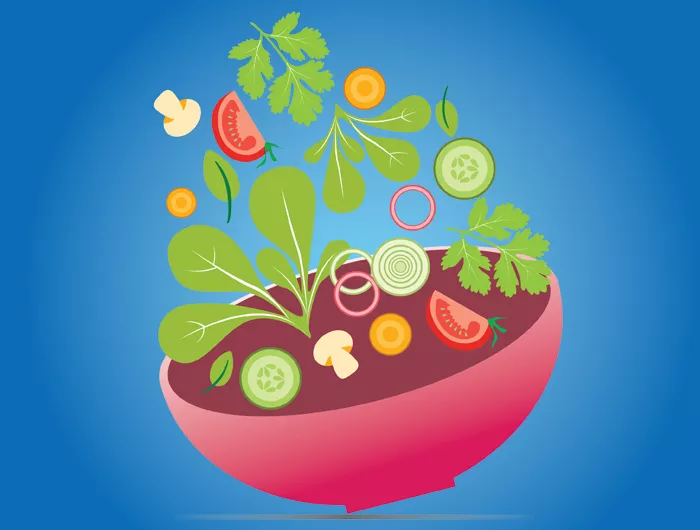No Bad Apples: How to cut back on food waste

“The government needs to compel the whole industry to prevent food waste rather than pushing the problem onto consumers,” says Jennifer Molidor of the Center for Biological Diversity.
But you can still do your bit.
“If there were a cash register on top of the garbage can that said, ‘Cha-ching! You threw away $32.73 of food over the past week,’ that might provide motivation to toss less,” says Ohio State’s Brian Roe. Here’s what may help.
Freeze It

The freezer is ideal for storing nuts, bread, butter, meat, fish, poultry, and blocks of hard cheese.
You can freeze milk. Just shake the thawed milk if the fat has separated.
Freeze (cooled-down) chicken or vegetable stock in ice cube trays. Put the frozen cubes in an airtight container or a zip-top bag.
Blanch vegetables before freezing to preserve their flavor.
Peel ripe bananas before freezing. Toss frozen chunks in a smoothie, or immerse the plastic bag in water to thaw to use in cooking or baking.
Freeze berries on a tray so they don’t stick together. Then transfer them to an airtight container or bag.
Chop peaches, melon, mangoes, pineapple, and other fruit before freezing.
Freeze lightly beaten eggs in an airtight container. Thaw in the fridge and use for scrambled eggs or cooking.
Pack ice-cube trays half full with fresh herbs like oregano, thyme, and basil, then top with olive oil. Transfer the frozen cubes to an airtight container or bag.
Before you put food in the freezer, label and date the containers.
Navigating Restaurants

Most entrées have 1,000+ calories. Don’t eat more to waste less. Take home the excess.
BYOB! (Bring your own to-go box for leftovers.)
Split an entrée with a friend.
Order a half entrée if you can.
Pass up buffets and other all-you-can-eat offers.
Shop Smart

Three avocados for $5? You probably don’t have to buy them all to get the promotional price.
To avoid overbuying, plan meals ahead.
Look for misshapen produce at reduced prices.
Buy frozen fruit for smoothies.
Try items made from stems, like cauliflower rice and broccoli slaw.
The Healthy Cook’s Waste-Free Kitchen Tips

Got greens like kale, spinach, or beet greens on the verge of going bad? Sauté or steam them. That will give them new life.
Revive wilted greens by putting them in ice water for 5-10 minutes.
Soft apples or pears? Place peeled, cored chunks in a pot with a bit of water, then heat and mash. Voilà! Apple (or pear) sauce.
Use leftover herbs in salads or sandwiches, as a garnish in soups, or for making pesto.
Stuck with small amounts of a variety of uncooked grains that have similar cooking times? Mix them together.
Find a few recipes with flexible ingredient lists to clean out your fridge. Veggie stir-fry, anyone?
Do a semi-annual or quarterly “eat up the pantry” to use up grains and canned goods.
Before traveling, eat your perishables or give them to friends. Or take them along.
Keep a container in the freezer for scraps of carrots, onions, celery, herbs, garlic, and poultry bones. Once it’s full, make stock. (Need a recipe? See nutritionaction.com/stock)
Storage Tips

Create an “eat first” area in your fridge where you’re most likely to see leftovers.
Disinfect your fridge regularly. Invisible mold spores can speed food spoilage.
Store fresh herbs like parsley and cilantro in a glass of water (like cut flowers).
Store mushrooms in a paper bag in the fridge (or in an open container if you like them drier).
Onions can make potatoes sprout. Keep them apart.
Bananas and apples can make other fruits ripen. Separate them.
Store oils that you use often (like olive or peanut) in a cool, dark place.
Keep oils that you use infrequently (like sesame or walnut) in the fridge.
Store leftovers in clear containers so you can see what they are.
Most “best by” dates refer to a food’s quality, not safety. If it smells and looks fine, no need to toss it.
Go to savethefood.com/storage for more tips.
Composting

Interested in backyard or indoor composting? Go to epa.gov/recycle/composting-home.
Go to litterless.com/wheretocompost to see if your community has a composting program. (Private services charge a modest fee.)
Urge your condo or apartment building to start composting.
You can compost fruit and veggie scraps, pasta, bread, cereal, egg shells, coffee grounds, paper plates, and more.
If you don’t take compostables out regularly, keep them in the freezer so they don’t smell.
Illustrations: Jorge Bach/CSPI.
Tags
Topics

